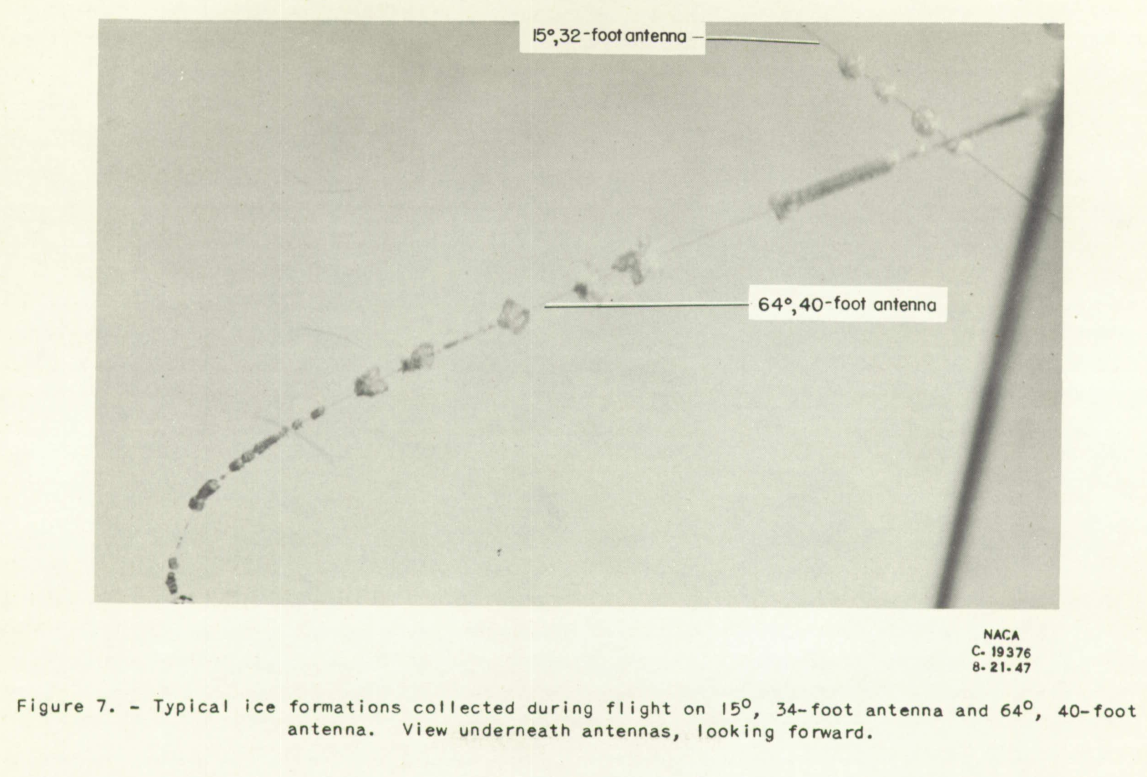"The current use of improved airplane ice-prevention equipment has extended operations in icing conditions and thus accentuated the need for protecting aircraft antennas against structural failures resulting from ice accretions"

These reviews are for studies of the effect of ice on radomes and antennas.
- Gowan, W. H., Jr.: Vibration and Investigation of CAA Type V-I09 Very-High-Frequency Aircraft Antenna. NACA-RM-SE9D20. 1949. ntrs.nasa.gov
"After 7 minutes of icing, however, one antenna element experienced a vibratory failure"
> review: NACA-RM-SE9D20 - Kepple, W. L.: Determination of Aircraft Antenna Loads Produced by Natural Icing Conditions. NACA-RM-E7H26a, 1948. ntrs.nasa.gov
"The current use of improved airplane ice-prevention equipment has extended operations in icing conditions and thus accentuated the need for protecting aircraft antennas against structural failures resulting from ice accretions"
> review: NACA-RM-E7H26a - Lewis,James P., and Blade, Robert J.: "Experimental Investigation of Radome Icing and Icing Protection", NACA-RM-E52J31, 1953. ntrs.nasa.gov
"At present very little is known of the effect of radome icing on radar operation."
> review: Component Icing - Lewis, James P.: An Analytical Study of Heat Requirements for Icing Protection of Radomes. NACA-RM-E53A22, 1953. ntrs.nasa.gov
"radome icing has serious effects on the radar operation"
> review: NACA-RM-E53A22
Many current aircraft do not have ice protection for radomes and antennas. The effects of ice can generally be tolerated. However, a manufacturer has to prove the robustness through test and analysis. The shedding of ice off of these structures also need to be considered.